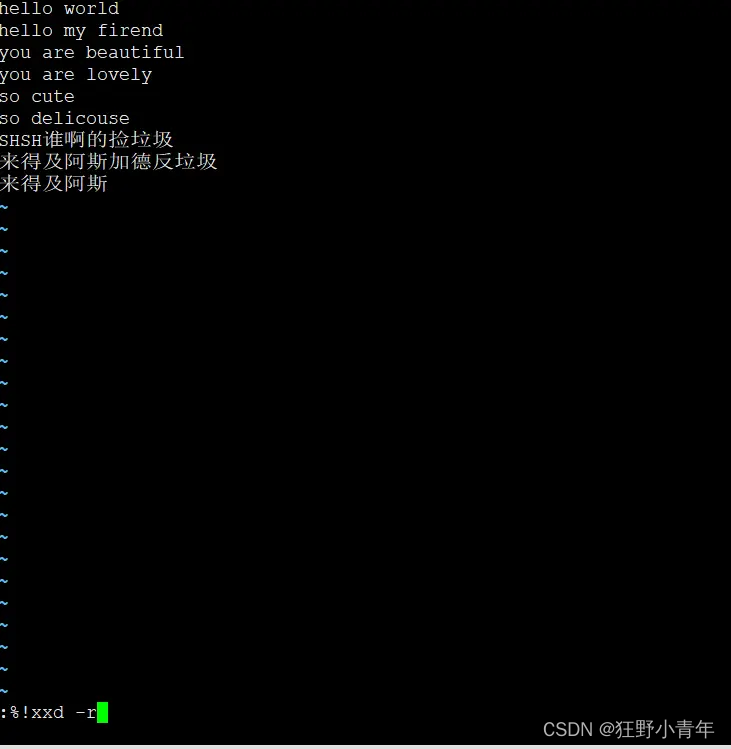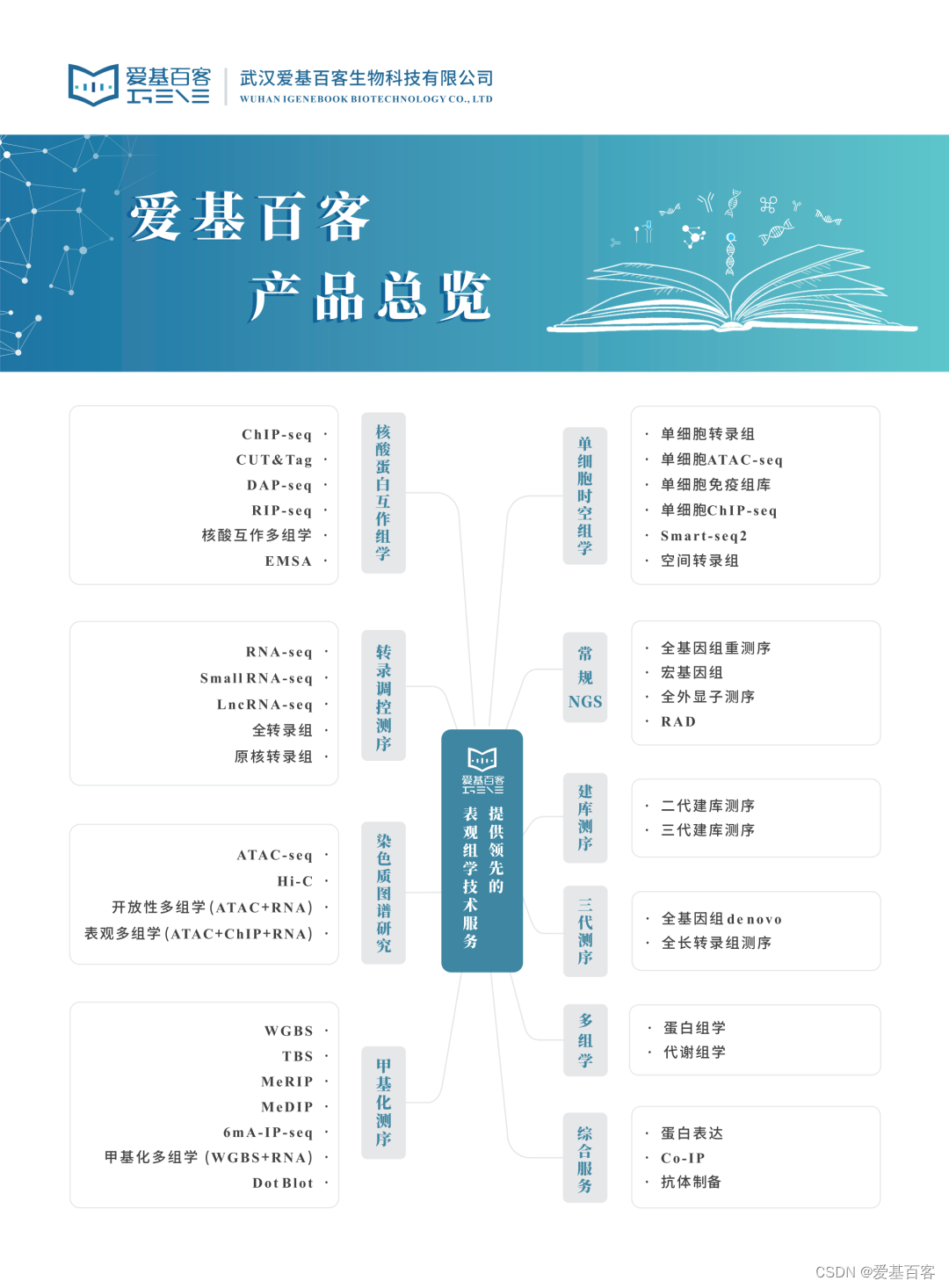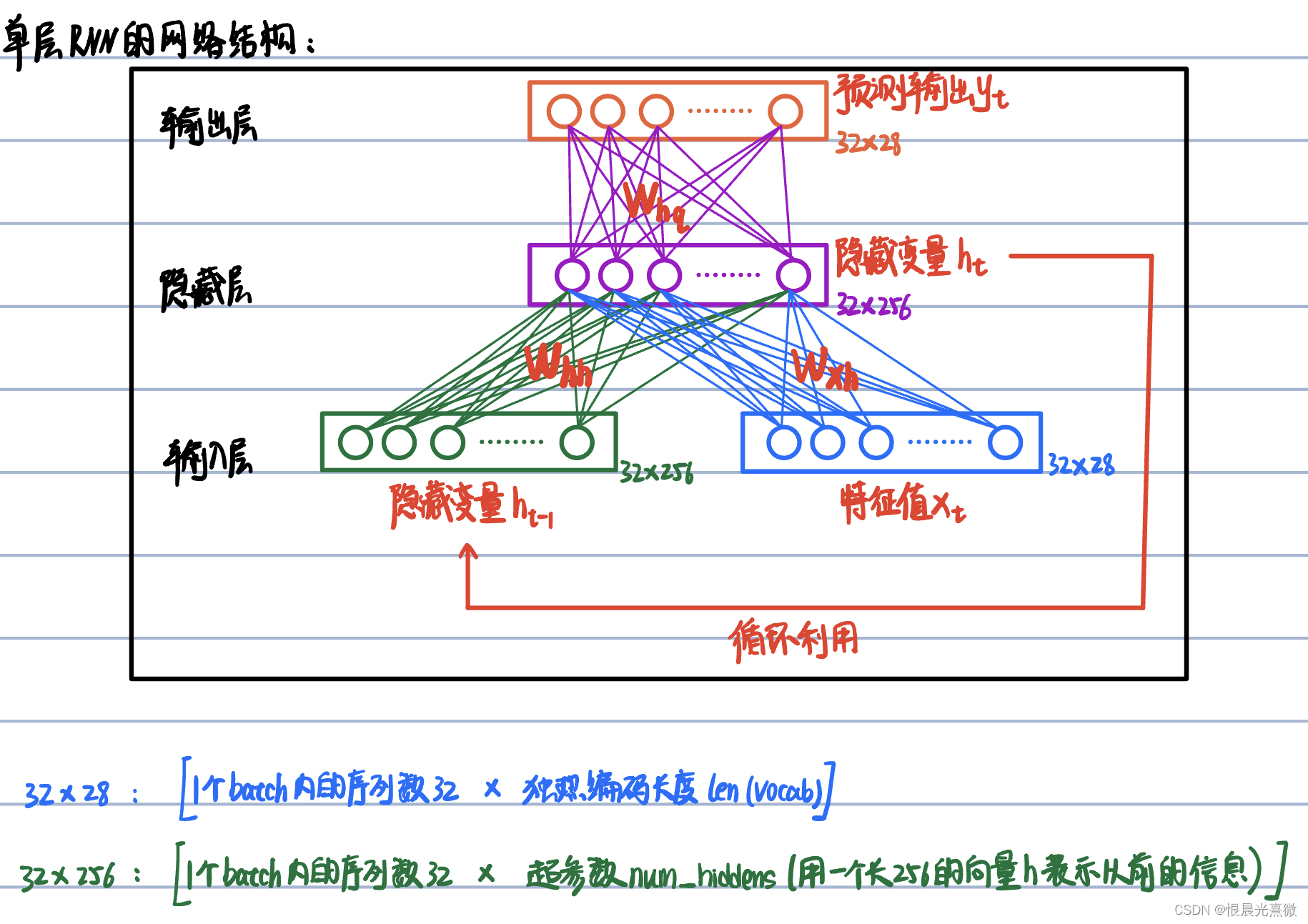最近由于工作需要,要写一套扫描相关的接口。
在这里记录一下。
依赖
sudo apt install libsane-dev sane-utils主要功能
初始化
我们在操作扫描仪之前需要初始化才能正常使用。
void scanner_init()
{printf("[%s] Start\n", __FUNCTION__);SANE_Int version_code = 0;sane_init(&version_code, auth_callback);printf("SANE version code: %d\n", version_code);
}static void
auth_callback(SANE_String_Const resource,SANE_Char *username, SANE_Char *password)
{
}初始化成功则version_code为SANE_STATUS_GOOD(0)。
获取当前扫描仪列表
const char **scanner_get_available_list()
{printf("[%s] Start\n", __FUNCTION__);SANE_Status status;SANE_Int num_devices = 0;const SANE_Device **device_list;//获取扫描仪列表status = sane_get_devices(&device_list, SANE_FALSE);if (status != SANE_STATUS_GOOD){printf("Error getting device list: %s\n", sane_strstatus(status));return NULL;}// 获取当前设备数量while (device_list[num_devices])num_devices++;// 如果设备列表为空if (num_devices == 0){printf("No scanners found.\n");sane_exit();return NULL;}// 分配内存const char **scanner_list = malloc(sizeof(SANE_Device *) * (num_devices + 1));if (!scanner_list){printf("Failed to allocate memory.\n");sane_exit();return NULL;}for (int i = 0; i < num_devices; i++){scanner_list[i] = strdup(device_list[i]->name);if (!scanner_list[i]){printf("Failed to allocate memory.\n");for (int j = 0; j < i; j++){free(scanner_list[j]);}free(scanner_list);sane_exit();return NULL;}}scanner_list[num_devices] = NULL;// sane_exit();// 返回设备列表return scanner_list;
}我们再把获取到的设备列表打印一下
const char **scanner_list = scanner_get_available_list();if (scanner_list != NULL){for (int num_devices = 0; scanner_list[num_devices]; ++num_devices){if (scanner_list[num_devices] != NULL) // 添加一个检查{printf("Device %d: name=%s \n",num_devices, scanner_list[num_devices]);}}}else{return;}打开扫描仪
int scanner_open_device(char *scanner_name)
{printf("[%s] Start\n", __FUNCTION__);SANE_Status sane_status = 0;if (sane_status = sane_open(scanner_name, &sane_handle)){printf("sane_open status: %s\n", sane_strstatus(sane_status));}if (sane_status != SANE_STATUS_GOOD)sane_handle = NULL;return sane_status;
}这里的入参scanner_name是扫描仪列表的scanner_list,如果要打开第一个扫描仪的话是scanner_list[0]。
如果函数的返回值不是SANE_STATUS_GOOD,表示打开失败了。
设置扫描选项
我这里设置了颜色,扫描的分辨率和纸张大小,还有很多可以设置的选项,可以自行探索。
static SANE_Handle sane_handle = NULL; // 扫描仪设备句柄,全局变量// 设置指定扫描仪颜色,通过传入参数val_color进行设置扫描设备的颜色
int scanner_set_color(SANE_String val_color)
{printf("[%s] Start!\n", __FUNCTION__);SANE_Status status;status = sane_control_option(sane_handle, 2,SANE_ACTION_SET_VALUE, val_color, NULL);if (status != SANE_STATUS_GOOD){printf("Option did not set, desc = %s\n", sane_strstatus(status));return status;}printf("set color option success!\n");return status;
}// 设置指定扫描仪扫描的分辨率(清晰程度,分辨率越大越清晰)
int scanner_set_resolutions(SANE_Int val_resolution)
{printf("[%s] Start!\n", __FUNCTION__);SANE_Status status;status = sane_control_option(sane_handle, 3, SANE_ACTION_SET_VALUE, &val_resolution, NULL);if (status != SANE_STATUS_GOOD){printf("Option did not set, desc = %s\n", sane_strstatus(status));return status;}printf("set resolution option success!\n");return status;
}设置纸张大小有点复杂,因为没法通过sane_control_option直接设置。因此曲线救国,通过设置扫描的纸张的长和宽来实现。
enum sizes_type
{A2 = 1,A3,A4,A5,A6
};static double g_saneSizeA4BrY = 297;int scanner_set_size(SANE_String size)
{printf("[%s] Start!\n", __FUNCTION__);SANE_Status status = SANE_STATUS_GOOD;int type;if (!strcmp("A2", size)){type = A2;}else if (!strcmp("A3", size)){type = A3;}else if (!strcmp("A4", size)){type = A4;}else if (!strcmp("A5", size)){type = A5;}else if (!strcmp("A6", size)){type = A6;}else{type = 0;}switch (type){case A2:status = kdk_scanner_set_size_real(sane_handle, 420, 594);break;case A3:status = kdk_scanner_set_size_real(sane_handle, 297, 420);break;case A4:status = kdk_scanner_set_size_real(sane_handle, 210, g_saneSizeA4BrY);break;case A5:status = kdk_scanner_set_size_real(sane_handle, 148, 210);break;case A6:status = kdk_scanner_set_size_real(sane_handle, 105, 144);break;default:status = SANE_STATUS_UNSUPPORTED;}return status;
}/*** @brief scanner_set_size_real 统一设置扫描设备尺寸** @param sane_handle 扫描句柄** @param val_size_br_x 扫描设备右下角的x坐标** @param val_size_br_y 扫描设备右下角的y坐标** @return 返回扫描设备设置尺寸的情况*/
SANE_Status scanner_set_size_real(SANE_Handle sane_handle, SANE_Int val_size_br_x,SANE_Int val_size_br_y)
{printf("[%s] Start!\n", __FUNCTION__);SANE_Status status = SANE_STATUS_GOOD;SANE_Word x = SANE_FIX(val_size_br_x);SANE_Word y = SANE_FIX(val_size_br_y);SANE_Word zero = SANE_FIX(0.0);status = sane_control_option(sane_handle, 7, SANE_ACTION_SET_VALUE, &zero, NULL);if (status != SANE_STATUS_GOOD){return status;}status = sane_control_option(sane_handle, 8, SANE_ACTION_SET_VALUE, &zero, NULL);if (status != SANE_STATUS_GOOD){return status;}status = sane_control_option(sane_handle, 9,SANE_ACTION_SET_VALUE, &x, NULL);if (status != SANE_STATUS_GOOD){printf("Option x did not set, desc = %s\n", sane_strstatus(status));return status;}status = sane_control_option(sane_handle, 10,SANE_ACTION_SET_VALUE, &y, NULL);if (status != SANE_STATUS_GOOD){printf("Option y did not set, desc = %s\n", sane_strstatus(status));return status;}return status;
}和前面一样,如果函数的返回值不是SANE_STATUS_GOOD,表示失败了。
扫描
扫描我分成两类,分为单页单面扫描和多页双面扫描。
单页单面扫描,就是不管有多少页都只扫描第一页的第一面。
/*** @brief 指定扫描仪进行扫描(统一按照多页,双面处理)** @param fileName:保存扫描文件的文件名,比如传test的话,扫描后的文件会是test_1,test_2之类的形式* * @param type:扫描类型 0:单面单面扫描,1:多页双面扫描** @return 操作的返回值,0或者7为成功,其他为失败*/
int scanner_start_scan(SANE_String_Const fileName, int type)
{printf("[%s] Start\n", __FUNCTION__);SANE_Status sane_status = 0;switch (type){case 0:return do_scan_one(fileName);case 1:return do_scan_all(fileName);default:return do_scan_all(fileName);}
}这是扫描单页的接口
SANE_Status do_scan_one(const char *fileName)
{printf("[%s] Start\n", __FUNCTION__);del_old_pic();//扫描之前删掉上一次的内容SANE_Status status;FILE *ofp = NULL;char path[PATH_MAX];char part_path[PATH_MAX];buffer_size = (32 * 1024);buffer = (SANE_Byte *)malloc(buffer_size);int i = 1;//设置打印机单页进纸张status = kdk_scanner_set_page_type(1);if (status != SANE_STATUS_GOOD){printf("set page type fail:%s\n", sane_strstatus(status));return status;}do{sprintf(path, "/tmp/%s-%d.pnm", fileName, i); // 格式化PNM文件路径strcpy(part_path, path);strcat(part_path, ".part");printf("picture name: %s\n", path);status = sane_start(sane_handle);if (status != SANE_STATUS_GOOD){break;}if (NULL == (ofp = fopen(part_path, "w"))){status = SANE_STATUS_ACCESS_DENIED;break;}status = scan_it(ofp);switch (status){case SANE_STATUS_GOOD:case SANE_STATUS_EOF:{status = SANE_STATUS_GOOD;if (!ofp || 0 != fclose(ofp)){status = SANE_STATUS_ACCESS_DENIED;break;}else{ofp = NULL;if (rename(part_path, path)){status = SANE_STATUS_ACCESS_DENIED;break;}}}break;default:break;}} while (0);// if (SANE_STATUS_GOOD != status)// {printf("[%s] cancel\n", __FUNCTION__);// sane_cancel(sane_handle);// }if (ofp){fclose(ofp);ofp = NULL;}if (buffer){free(buffer);buffer = NULL;}return status;
}// 删除上一次扫描的文件
void del_old_pic()
{DIR *dir;struct dirent *entry;char path[] = "/tmp/";char ext[] = ".pnm";dir = opendir(path);if (dir == NULL){perror("Unable to open directory");exit(EXIT_FAILURE);}while ((entry = readdir(dir)) != NULL){// Check if the entry is a file and ends with .pnmif (entry->d_type == DT_REG &&strstr(entry->d_name, ext) != NULL &&strcmp(entry->d_name + strlen(entry->d_name) - strlen(ext), ext) == 0){char full_path[512];sprintf(full_path, "%s%s", path, entry->d_name);if (remove(full_path) == 0){printf("Deleted %s\n", full_path);}else{perror("Unable to delete file");}}}closedir(dir);
}// sane 设置扫描方式
int kdk_scanner_set_page_type(SANE_Int type)
{printf("[%s] Start!\n", __FUNCTION__);SANE_Status status;status = sane_control_option(sane_handle, 4,SANE_ACTION_SET_VALUE, &type, NULL);if (status != SANE_STATUS_GOOD){printf("Option did not set, desc = %s\n", sane_strstatus(status));return status;}printf("set page type option success!\n");return status;
}保存图片,这一部分细节很多,我也没仔细研究,直接用就行。
static SANE_Status scan_it(FILE *ofp)
{int i, len, first_frame = 1, offset = 0, must_buffer = 0, hundred_percent;SANE_Byte min = 0xff, max = 0;SANE_Parameters parm;SANE_Status status;Image image = {0, 0, 0, 0, 0};static const char *format_name[] = {"gray", "RGB", "red", "green", "blue"};SANE_Word total_bytes = 0, expected_bytes;SANE_Int hang_over = -1;do{if (!first_frame){status = sane_start(sane_handle);if (status != SANE_STATUS_GOOD){goto cleanup;}}status = sane_get_parameters(sane_handle, &parm);if (status != SANE_STATUS_GOOD){goto cleanup;}if (first_frame){switch (parm.format){case SANE_FRAME_RED:case SANE_FRAME_GREEN:case SANE_FRAME_BLUE:assert(parm.depth == 8);must_buffer = 1;offset = parm.format - SANE_FRAME_RED;break;case SANE_FRAME_RGB:assert((parm.depth == 8) || (parm.depth == 16));case SANE_FRAME_GRAY:assert((parm.depth == 1) || (parm.depth == 8) || (parm.depth == 16));if (parm.lines < 0){must_buffer = 1;offset = 0;}else{write_pnm_header(parm.format, parm.pixels_per_line, parm.lines, parm.depth, ofp);}break;default:break;}if (must_buffer){image.width = parm.bytes_per_line;if (parm.lines >= 0)image.height = parm.lines - STRIP_HEIGHT + 1;elseimage.height = 0;image.x = image.width - 1;image.y = -1;if (!advance(&image)){status = SANE_STATUS_NO_MEM;goto cleanup;}}}else{assert(parm.format >= SANE_FRAME_RED && parm.format <= SANE_FRAME_BLUE);offset = parm.format - SANE_FRAME_RED;image.x = image.y = 0;}hundred_percent = parm.bytes_per_line * parm.lines * ((parm.format == SANE_FRAME_RGB || parm.format == SANE_FRAME_GRAY) ? 1 : 3);// 这段是写图片数据while (1){double progr;status = sane_read(sane_handle, buffer, buffer_size, &len);total_bytes += (SANE_Word)len;progr = ((total_bytes * 100.) / (double)hundred_percent);if (progr > 100.)progr = 100.;if (status != SANE_STATUS_GOOD){if (status != SANE_STATUS_EOF){return status;}break;}if (must_buffer){switch (parm.format){case SANE_FRAME_RED:case SANE_FRAME_GREEN:case SANE_FRAME_BLUE:for (i = 0; i < len; ++i){image.data[offset + 3 * i] = buffer[i];if (!advance(&image)){status = SANE_STATUS_NO_MEM;goto cleanup;}}offset += 3 * len;break;case SANE_FRAME_RGB:for (i = 0; i < len; ++i){image.data[offset + i] = buffer[i];if (!advance(&image)){status = SANE_STATUS_NO_MEM;goto cleanup;}}offset += len;break;case SANE_FRAME_GRAY:for (i = 0; i < len; ++i){image.data[offset + i] = buffer[i];if (!advance(&image)){status = SANE_STATUS_NO_MEM;goto cleanup;}}offset += len;break;default:break;}}else /* ! must_buffer */{if ((parm.depth != 16))fwrite(buffer, 1, len, ofp);else{
#if !defined(WORDS_BIGENDIAN)int i, start = 0;/* check if we have saved one byte from the last sane_read */if (hang_over > -1){if (len > 0){fwrite(buffer, 1, 1, ofp);buffer[0] = (SANE_Byte)hang_over;hang_over = -1;start = 1;}}/* now do the byte-swapping */for (i = start; i < (len - 1); i += 2){unsigned char LSB;LSB = buffer[i];buffer[i] = buffer[i + 1];buffer[i + 1] = LSB;}/* check if we have an odd number of bytes */if (((len - start) % 2) != 0){hang_over = buffer[len - 1];len--;}
#endiffwrite(buffer, 1, len, ofp);}}if (verbose && parm.depth == 8){for (i = 0; i < len; ++i)if (buffer[i] >= max)max = buffer[i];else if (buffer[i] < min)min = buffer[i];}}first_frame = 0;} while (!parm.last_frame);if (must_buffer){image.height = image.y;write_pnm_header(parm.format, parm.pixels_per_line, image.height, parm.depth, ofp);#if !defined(WORDS_BIGENDIAN)if (parm.depth == 16){int i;for (i = 0; i < image.height * image.width; i += 2){unsigned char LSB;LSB = image.data[i];image.data[i] = image.data[i + 1];image.data[i + 1] = LSB;}}
#endiffwrite(image.data, 1, image.height * image.width, ofp);}fflush(ofp);cleanup:if (image.data)free(image.data);return status;
}void write_pnm_header(SANE_Frame format, int width, int height, int depth, FILE *ofp)
{printf("[%s] Start\n", __FUNCTION__);switch (format){case SANE_FRAME_RED:case SANE_FRAME_GREEN:case SANE_FRAME_BLUE:case SANE_FRAME_RGB:fprintf(ofp, "P6\n# SANE data follows\n%d %d\n%d\n", width, height, (depth <= 8) ? 255 : 65535);break;default:if (depth == 1)fprintf(ofp, "P4\n# SANE data follows\n%d %d\n", width, height);elsefprintf(ofp, "P5\n# SANE data follows\n%d %d\n%d\n", width, height, (depth <= 8) ? 255 : 65535);break;}
}static void *
advance(Image *image)
{if (++image->x >= image->width){image->x = 0;if (++image->y >= image->height || !image->data){size_t old_size = 0, new_size;if (image->data)old_size = image->height * image->width;image->height += STRIP_HEIGHT;new_size = image->height * image->width;if (image->data)image->data = realloc(image->data, new_size);elseimage->data = malloc(new_size);if (image->data)memset(image->data + old_size, 0, new_size - old_size);}}if (!image->data)fprintf(stderr, "can't allocate image buffer (%dx%d)\n",image->width, image->height);return image->data;
}双页扫描,用do_scan_all替换do_scan_one,其他的函数都一样。
// 双面扫描全部文件+保存为PNM图像格式
SANE_Status do_scan_all(const char *fileName)
{printf("[%s] Start\n", __FUNCTION__);SANE_Status status; // 返回状态FILE *ofp = NULL; // 输出文件指针char path[PATH_MAX]; // PNM文件路径char part_path[PATH_MAX]; // 临时PNN文件路径buffer_size = (32 * 1024); // 缓冲区大小buffer = malloc(buffer_size); // 动态分配缓冲区int i = 1;del_old_pic();//设置打印机多页进纸张status = kdk_scanner_set_page_type(0);if (status != SANE_STATUS_GOOD){printf("set page type fail:%s\n", sane_strstatus(status));return status;}do{sprintf(path, "/tmp/%s-%d.pnm", fileName, i); // 格式化PNM文件路径strcpy(part_path, path); // 复制PNM文件路径到临时文件路径strcat(part_path, ".part"); // 在临时文件路径后添加扩展名".part"// 启动扫描过程status = sane_start(sane_handle);if (status != SANE_STATUS_GOOD){break;}// 创建临时文件if (NULL == (ofp = fopen(part_path, "w"))){status = SANE_STATUS_ACCESS_DENIED;break;}// 进行扫描,并将结果写入到临时文件中status = scan_it(ofp);switch (status){case SANE_STATUS_GOOD:case SANE_STATUS_EOF:{// 扫描成功或结束status = SANE_STATUS_GOOD;// 关闭临时文件,并检查是否成功关闭if (!ofp || 0 != fclose(ofp)){status = SANE_STATUS_ACCESS_DENIED;break;}else{ofp = NULL; // 将文件指针设置为NULL,避免重复关闭// 将临时文件重命名为正式的PNM文件if (rename(part_path, path)){status = SANE_STATUS_ACCESS_DENIED;break;}}}break;default:break;}i++;} while (status == SANE_STATUS_GOOD);// 如果出现错误,则取消扫描进程if (SANE_STATUS_GOOD != status){sane_cancel(sane_handle);}// 关闭输出文件if (ofp){fclose(ofp);ofp = NULL;}// 释放缓冲区内存if (buffer){free(buffer);buffer = NULL;}if ((status == SANE_STATUS_NO_DOCS) && (i > 1))status = SANE_STATUS_GOOD;return status; // 返回状态
}扫描完成会会在tmp下生成扫描文件。
关闭设备
void scanner_close_device()
{printf("[%s] Start\n", __FUNCTION__);if (sane_handle != NULL){sane_close(sane_handle);}sane_handle = NULL;
}
结束使用
void scanner_exit()
{printf("[%s] Start\n", __FUNCTION__);sane_exit();
}参考资料
Linux下通用扫描仪API——SANE( Scanner Access Now Easy)_linux sane-CSDN博客







